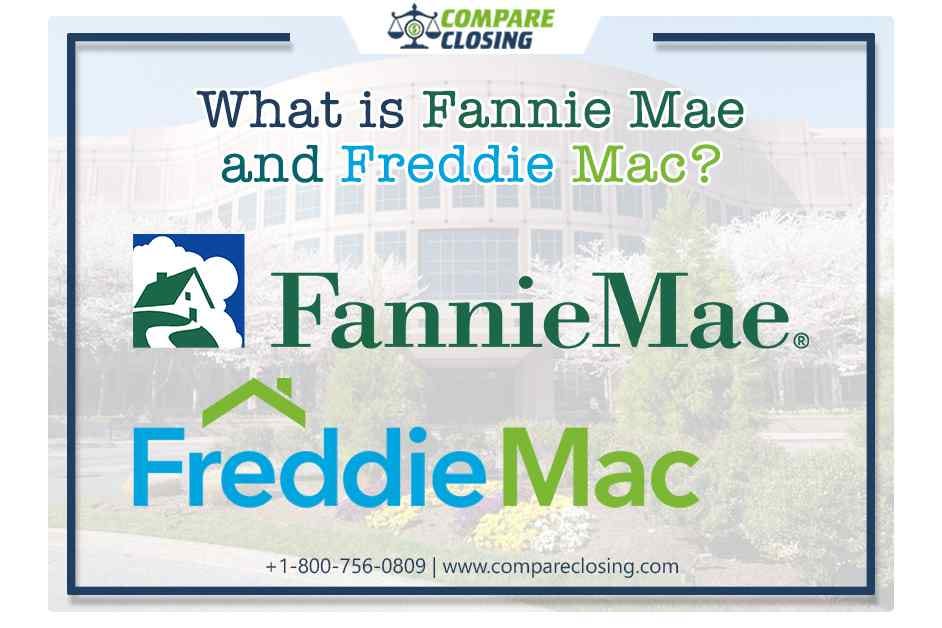
Fannie Mae & Freddie Mac
Introduction of Fannie Mae and Freddie Mac?
Fannie Mae or FNMA is a nickname for Federal National Mortgage Association. It was established in 1938.
It is a Government-sponsored Enterprise (GSE). In 1968, Fannie Mae ceased to exist as a government entity and became a quasi-governmental, federally charted corporation to buy mortgages other than those insured by the Federal Housing Administration, otherwise known as FHA.
Freddie Mac or FHLMC is a nickname for Federal Home Loan Mortgage Corporation. Freddie Mac is also a government-sponsored enterprise (GSE) that was brought into existence in the year 1970 by Congress.
It provides competition to Fannie Mae and provides funds availability in the secondary mortgage market.
What is Fannie Mae’s and Freddie Mac’s Role?
Fannie Mae’s purpose is to create a secondary market for the purchase and sale of mortgages. The secondary mortgage market is where home loans and servicing rights are bought and sold between lenders and investors.
Most home loans are eventually sold to the secondary mortgage market. The secondary mortgage market exists because the bank has used its own funds to make the loan.
So they will sell the loan to the secondary market to replenish their money available to make more home loans. Often these loans are sold to institutions such as Fannie Mae.
Freddie Mac also works in the same way as Fannie May in the secondary market with slightly different qualification Guidelines.
Both the entities’ role is to provide stability and liquidity for the respective banks and lenders that they purchase from.
What Does Fannie Mae and Freddie Mac do?
Fannie Mae purchases pools of mortgages from commercial lenders and resells them in the form of mortgage-backed and other securities to investors. Mortgage-backed securities are bonds backed by payments on mortgage loans.
These securities are then sold to the investor on Wall Street who including governments, pension funds, insurance companies, and hedge funds.
Purchases Are generally restricted to conforming loans, which are loans that meet certain size limits and other conditions.
Freddie Mac also works in the same way as Fannie May in the secondary market with slightly different qualification Guidelines.
Freddie Mac mainly purchases the loans from smaller “thrift” banks and then sell them off to the secondary mortgage market.
Fannie Mae and Freddie Mac Concept
The concept behind Fannie Mae and Freddie Mac may seem complicated, but it’s actually quite straightforward.
Fannie Mae and Freddie Mac purchases loans from banks bundle them and sell them off on the market as more significant, consolidated financial instruments.
This process was established by the federal government to enable banks to wipe off their debts of the books while allowing Fannie Mac and Freddie Mac to profit from relatively low investments.
Both the entities’ mortgage-backed securities are similar to bonds and have varying maturities and coupon rates.
The securities generally pay interest as well as principal to the investor monthly, which means the investor earns interest on a decreasing principal amount over time.
Both the entities are exempt from Securities and Exchange Commission regulations and are not subject to state or local income taxes.
Fannie Mae and Freddie Mac guarantee the payment of interest and principal on its mortgage-backed securities.
If there are defaults on the underlying mortgages, these entities will make required monthly payments on the securities.
Conclusion
Looking at things if you drill down the information, you would conclude that both Fannie Mae and Freddie Mac are more similar in terms of working than they are different.
Both of them purchase the loans from the banks and sell them on the secondary mortgage market with few differences in their guidelines.
In other words, both entities are competing against each other in the same market.
They provide more stability in the current mortgage market, especially in the conventional loans market as they are backed either by Fannie Mae or Freddie Mac.
https://www.compareclosing.com/blog/what-are-fannie-mae-and-freddie-mac/
Comments
Post a Comment